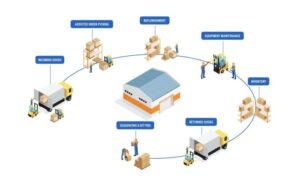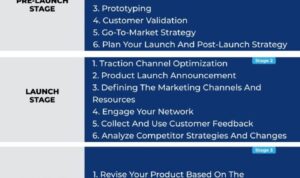Financial forecasting sets the stage for strategic business planning by analyzing data, methods, and tools to predict future financial outcomes with precision and insight. Dive into the world of financial forecasting and discover how it shapes the future of businesses.
What is Financial Forecasting?

Financial forecasting is the process of estimating future financial outcomes for a company based on historical data, trends, and market conditions. It involves predicting revenues, expenses, profits, and cash flow to help businesses make informed decisions and set realistic goals.
Importance of Financial Forecasting in Business Planning
Financial forecasting plays a crucial role in business planning as it helps companies anticipate potential financial challenges, identify opportunities for growth, and allocate resources effectively. By providing a roadmap for future financial performance, businesses can make strategic decisions to ensure long-term success.
- Forecasting helps in budgeting and setting financial goals.
- It aids in assessing the financial health of the company.
- Forecasting assists in making informed investment and financing decisions.
- It allows businesses to anticipate and prepare for changes in the market.
“Without financial forecasting, businesses are essentially driving blindfolded, unsure of what lies ahead.”
Types of Data Used in Financial Forecasting
Financial forecasting relies on various types of data to make accurate predictions and projections. These data sources include historical financial statements, market research, economic indicators, industry trends, and internal operational metrics.
- Historical Financial Statements: Past financial data such as income statements, balance sheets, and cash flow statements are used to identify trends and patterns.
- Market Research: Data on consumer behavior, market demand, competition, and industry trends provide insights into future sales and revenue projections.
- Economic Indicators: Information on interest rates, inflation, GDP growth, and unemployment rates help businesses forecast macroeconomic conditions that may impact their financial performance.
- Industry Trends: Understanding industry-specific trends and developments allows companies to adjust their forecasts based on the external environment.
- Internal Operational Metrics: Key performance indicators (KPIs) related to production, sales, inventory, and expenses help businesses track their operational efficiency and performance.
Methods of Financial Forecasting
Financial forecasting utilizes various methods to predict future financial outcomes. These methods can be broadly categorized into quantitative and qualitative approaches.
Quantitative Methods
Quantitative methods in financial forecasting involve the use of historical financial data and mathematical models to make predictions. These methods rely on numerical data and statistical analysis to forecast future trends. Some common quantitative methods include:
- Time Series Analysis: This method analyzes historical data to identify patterns and trends that can be used to predict future outcomes. It involves techniques like moving averages, exponential smoothing, and trend analysis.
- Regression Analysis: Regression models are used to establish relationships between variables and predict future values based on these relationships. It helps in understanding the impact of various factors on financial performance.
Qualitative Methods
Qualitative methods in financial forecasting are based on expert judgment, market research, and subjective assessments. These methods are used when historical data is limited or unreliable. Some common qualitative methods include:
- Delphi Method: This involves collecting opinions from a panel of experts in the industry to arrive at a consensus forecast. It helps in incorporating expert knowledge and insights into the forecasting process.
- Market Research: Conducting surveys, interviews, and focus groups to gather insights on consumer behavior, market trends, and competitive landscape. This information is then used to make informed forecasts.
Comparison of Time Series Forecasting and Regression Analysis
Time series forecasting and regression analysis are both important tools in financial forecasting, but they have distinct differences:
- Time Series Forecasting: Focuses on analyzing past data to identify patterns and trends that can be extrapolated into the future. It is particularly useful for short-term forecasting and understanding seasonality in data.
- Regression Analysis: Examines the relationship between dependent and independent variables to make predictions. It is effective in identifying causal relationships and understanding the impact of various factors on financial performance.
Factors Influencing Financial Forecasting
Financial forecasting is influenced by a variety of external and internal factors that can impact the accuracy and reliability of predictions. Understanding these factors is crucial for businesses to make informed decisions and plan for the future effectively.
External Factors
External factors such as market conditions, government regulations, and competitive landscape can greatly impact financial forecasting.
- Market Conditions: Fluctuations in the stock market, interest rates, and consumer demand can all affect revenue projections and financial performance.
- Government Regulations: Changes in tax laws, trade policies, or industry regulations can have a significant impact on expenses and profitability.
- Competitive Landscape: Shifts in market share, new entrants, or changes in consumer preferences can influence sales forecasts and overall financial health.
Internal Factors, Financial forecasting
Internal factors within a company, such as sales trends and operational efficiency, can also play a critical role in financial forecasting.
- Sales Trends: Historical sales data and patterns can provide valuable insights into future revenue projections and help identify growth opportunities.
- Operational Efficiency: Factors like production costs, inventory management, and supply chain performance can impact profitability and cash flow forecasts.
Economic Indicators
Economic indicators, such as GDP growth, inflation rates, and unemployment levels, can serve as leading indicators for financial forecasting.
- GDP Growth: A strong GDP growth rate typically indicates a healthy economy, which can lead to higher consumer spending and increased sales for businesses.
- Inflation Rates: Rising inflation can erode purchasing power and affect pricing strategies, leading to changes in revenue forecasts.
- Unemployment Levels: High unemployment rates may signal reduced consumer confidence and lower spending, impacting revenue projections and overall financial performance.
Tools and Technologies for Financial Forecasting

Financial forecasting relies heavily on various tools and technologies to ensure accuracy and efficiency in predicting future financial outcomes. Let’s explore some popular software tools, the role of artificial intelligence, and how data visualization tools can enhance the forecasting process.
Popular Software Tools for Financial Forecasting
- Excel: A widely used tool for financial modeling and forecasting due to its versatility and user-friendly interface.
- Adaptive Insights: Cloud-based software that offers collaborative budgeting, planning, and forecasting solutions for businesses of all sizes.
- Oracle Hyperion: Enterprise performance management software that helps in financial planning and forecasting for large organizations.
- IBM Planning Analytics: An AI-powered tool that enables users to create more accurate forecasts by incorporating predictive analytics.
The Role of Artificial Intelligence in Financial Forecasting
Artificial intelligence plays a crucial role in improving the accuracy of financial forecasts by analyzing large datasets and identifying patterns that humans may overlook. AI algorithms can process information quickly and efficiently, leading to more reliable predictions and better decision-making for businesses.
Data Visualization Tools for Financial Forecasting
- Tableau: A powerful data visualization tool that allows users to create interactive charts, graphs, and dashboards to present financial data in a visually appealing way.
- Power BI: Microsoft’s business analytics tool that helps in creating interactive reports and dashboards for financial forecasting and analysis.
- Domo: Cloud-based platform that provides real-time insights through customizable visualizations, enabling better decision-making based on financial data.
- QlikView: Business intelligence tool that offers data visualization capabilities to help organizations make sense of complex financial information for forecasting purposes.





